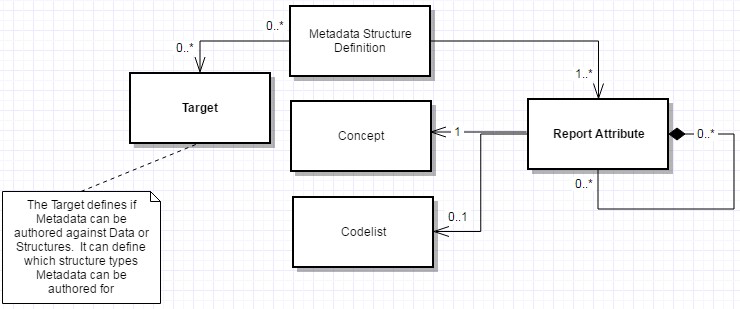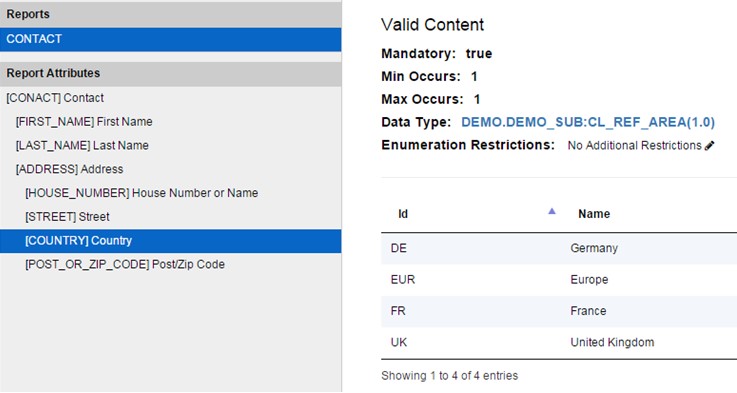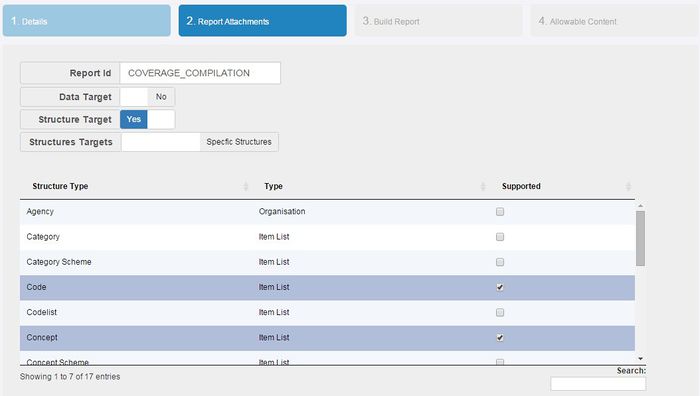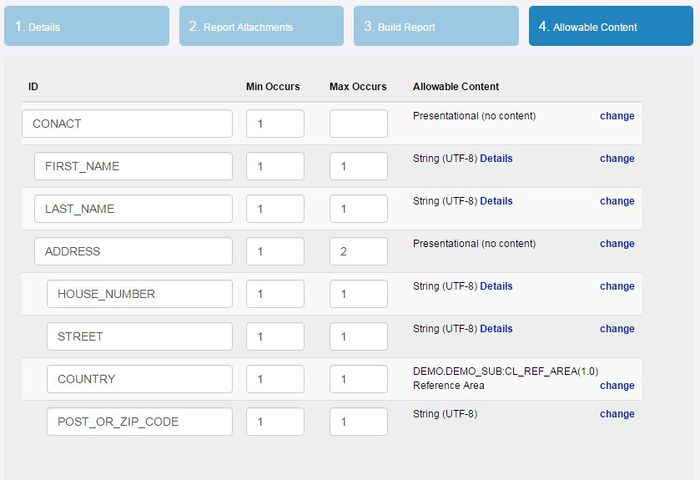Metadata Structure Definition - Structural Metadata Management
Overview
The Metadata Structure Definition (MSD) is analogous to the Data Structure Definition (DSD), it defines the structure and allowable content of a Metadata Report (a DSD defines the structure and allowable content of a Dataset). The MSD also defines what types of artefact in the Fusion Registry the Metadata Report can be reported for.
- Figure 1 showing (simplified) UML for a Metadata Structure Definition
The Metadata Structure Definition (MSD) provides a template for Metadata Reports, and is used to assist in authoring and validation of a Metadata Report. When a user authors a Metadata Report, the report must conform to the MSD this is analogous to a user reporting data which must conform to the Data Structure Definition (DSD). There are a few main differences between a DSD and a MSD. Once such difference is that a MSD contains the definition of allowable Targets, these define what the Metadata Report can be authored against, a DSD does not have this concept. The MSD contains a hierarchy of Reported Attributes, a Reported Attribute is almost identical to a DSD Component (Dimension or Attribute) however a DSD Component is not hierarchical.
- Figure 2 showing the view of an MSD
Note: Details on authoring Reference Metadata can be found in the Reference Metadata Management guide.
Metadata Structure Definition Wizard
The Metadata Structure Definition Wizard includes the first generic step for information.
The second step requires information on the Report and allowable Targets. Targets can include Data related targets, this includes:
- Observation
- Series
- Code in the context of a Dataflow
- Concept in the context of a Dimension
Structure targets can include any Identifiable Structure, or specific structures can be selected.
- Figure 3 showing the Report Attachments step of the Metadata Structure Definition Wizard
The third step is used to build the report template definition, by building the Report Attributes hierarchy. Each Reported Attribute must reference a Concept (which provides the name and description). This step can be used to build a hierarchy by using drag and drop.
The final step in the Metadata Structure Wizard is to specify the allowable content for each Metadata Attribute. Content type includes formats such as HTML, String, Numerical and enumerated formats, amongst others. For textual content (HTML, String) the MSD can also define if multilingual text is supported. If multilingual support is set to true in the definition then Metadata can be reported for the Attribute in multiple languages.
If the Metadata Attribute is used simply as a presentational node then it can be set to allow no content. A presentational node can be used if an Attribute has child Attributes, as shown in the following example:
- Figure 4 showing the allowable content step of the MSD Wizard. The hierarchy from the previous step is replicated in this step of the Wizard
As shown in the above contact report, this step also allows the user to specify the minimum number of times the Attribute can appear in the Report. A Min Occurs of 1 would indicate that the Attributes appearance is mandatory. If Max Occurs is left empty then this will be interpreted as unbounded (it can be reported multiple times with no imposed limit). In the above example there is no upper limit on the number of Contacts, but there must be at least one. In the above example each Contact must have 1 Address but no more than 2. Each Address must have a house number or name, a Street, Country and post/zip code. The list of countries will be provided by the Reference Area Codelist that the COUNTRY Attribute has been linked to.



